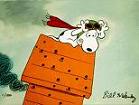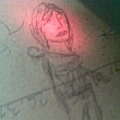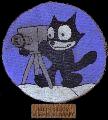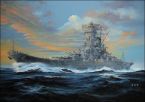obvert
Posts: 14050
Joined: 1/17/2011
From: PDX (and now) London, UK
Status: offline

|
quote:
ORIGINAL: Gaspote
quote:
ORIGINAL: rustysi
quote:
ORIGINAL: Gaspote
quote:
ORIGINAL: JocMeister
quote:
ORIGINAL: Gaspote
Pretty unfair for the jap when you know most of japanese bomber operate at night. Sending them on daylight make them easy target too.
On the contrary that HR is actually a boon to the Japanese player. Japanese night bombings is never going to be more then a nuisance in the game. Neither over land nor water. 500 B24s on night bombing on the other hand...
IRL, a raid of 500 4E at night would result in heavy loss from collision.
I don't really understand why 4E perform so well at night because it wasn't the case historically. I didn't fix a HR in my PBEM, I don't know if my opponent will do this though, because he seems to not use night bombing that much and me too.
I have to disagree here, by early '45 at least the USAAF was sending 500-600 plane raids every other night form the Marianas to Japan and I don't think collisions were a 'game' changer. Before that time frame I don't think I'd ever try and use such a large raid.
Do you really think B29B is like B24 ?
B29B was the only one with an improved radar making night mission possible, the fact most japanese fighter have been shot down help too.
B29B was design to fly at night at 8000 feet and it was the only one. Although the fact they start to use night bombing in 45 show it wasn't possible before.
In real life, I don't think a single 4E before B29 could have find his target and especially aim it with their speed and their bomb sight absolutely not design for night bombing.
Compare to this, japanese were know for their optical at night. The fact 20-40 bombers flew night bombing on Guadalcanal without much trouble prove this point. Flying at real life altitude (20 000 feet) you will get the same result.
The night raid of the Marianas show they improve their skill with time too.
Night bombing in game becomes an issue when huge forces are involved in port or airfield strikes. Nemo made tests years ago showing he could wipe out 100s of 4E on a big Allied base by going in low at 1k with 200+ Japanese 2E bombers. They also took very heavy losses, but hitting the 4Es was worth it. (The Marianas raids you mention also had a high loss rate for the Japanese. The raids happened over three months, involving around 80 Japanese bombers total, destroying 11 B-29 and damaging another 40 or so, for the loss of ~37 Japanese planes. Unfortunately flak in game at night doesn't work this well, although NF, which downed there of the bombers, do).
In reality large scale night raids of 200+ bombers against airfields and ports were not done, and that makes me question whether it was possible to have a 200-400 planes strike at night against an airfield or a port and achieve any kind of accuracy. As noted before, in the European theatre the British moved away from any but rare specialized strikes against pinpoint targets, and went to area bombing. They could get 400-500 planes onto target, but the targets were huge, the bombs were incendiary and the radar and other targeting systems in place were extensive.
Here is an interesting article on combating Japanese night bombing from the USAAF perspective, but it also has a lot of interesting information on the USAAF night bombing tactics. In the Pacific most raids at night were small, 25 planes or less, for both sides. This included some new info for me, such as US night fighter groups being used to strafe and disrupt IJA arty and bombing shipping, as well as working i tandem with PT Boats to locate Japanese positions at night based on defensive gun flare. If anyone has more like this, please link.
http://www.usaaf.net/ww2/night/nightpg9.htm
At this scale in game night-bombing works alright, as do night bombing defenses, but when it's scaled way up that it becomes a problem.
In the endgame the B-29 should be able to cause extensive damage at night against strategic targets, and it does. The system works best when it again mirrors real war situations, i.e. when B-29s are hitting manpower at 8-10k and causing huge fires that destroy infrastructure.
_____________________________
"Success is the ability to go from one failure to another with no loss of enthusiasm." - Winston Churchill
|
 Printable Version
Printable Version







 Both Nik and Joe have been part of the dev team and they are probably not the only ones using a hr. Noone forces you to use a hr nor is there anyone forcing you out of your oppinion of pin point attacks at night but if you just want to go with your above statement, there was more than one dev using a hr, so...
Both Nik and Joe have been part of the dev team and they are probably not the only ones using a hr. Noone forces you to use a hr nor is there anyone forcing you out of your oppinion of pin point attacks at night but if you just want to go with your above statement, there was more than one dev using a hr, so... 




 Hopefully you and your opponent can work out any potential problems along the way if they show up.
Hopefully you and your opponent can work out any potential problems along the way if they show up.  Seemed to work well even into '45.
Seemed to work well even into '45.

 response in post 3 and Poltryboy's
response in post 3 and Poltryboy's 


 Share the wealth Dude! Or do we have to belong to some obscure order, go through initiations and get the secret handshake?
Share the wealth Dude! Or do we have to belong to some obscure order, go through initiations and get the secret handshake?
 But it's a lot simpler than that. The game has no rules. There ain't no rules. The game can go into never-never land and Wendy can lift her skirt to anything that comes along. That's how the flexibility of the game system works.
But it's a lot simpler than that. The game has no rules. There ain't no rules. The game can go into never-never land and Wendy can lift her skirt to anything that comes along. That's how the flexibility of the game system works.  New Messages
New Messages No New Messages
No New Messages Hot Topic w/ New Messages
Hot Topic w/ New Messages Hot Topic w/o New Messages
Hot Topic w/o New Messages Locked w/ New Messages
Locked w/ New Messages Locked w/o New Messages
Locked w/o New Messages Post New Thread
Post New Thread